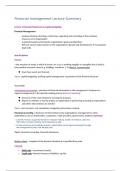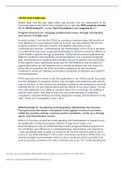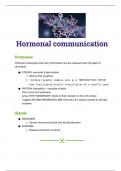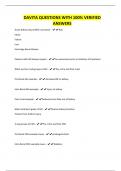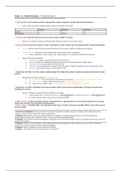Finance Tutorial 6
As discussed in the lecture, we observe two patterns: (1) investor portfolio behaviour seems to exhibit
home bias and (2) home bias has been decreasing over time. Which existing theory (or theories) do
you think best rationalizes both of these patterns?
There are various theories attempting to explain empirically observed home bias. This essay will briefly
discuss the following explanations of home bias: exchange rate volatility, low investor protection in
select foreign markets, lack of sophistication leading to under-diversification, transaction costs and
capital controls, asymmetric information, information acquisition costs, and information
overconfidence. While these theories all rationalize pattern (1), not all of them can explain patter (2) of
decreasing home bias. The essay argues that the following theories do so best: transaction costs and
capital controls, asymmetric information, and information acquisition costs.
Firstly, exchange rate volatility in the absence of purchase pricing parity would reduce attractiveness of
foreign assets denominated in other currencies if investors view wealth in terms of their domestic
currency. Exchange rate volatility would thus be an additional risk factor when investing in foreign
assets, causing some reduction in foreign asset demand and home bias. Although it can be hedged,
there are hedging costs involved as well.
Secondly, low investor protection in some foreign markets reduce attractiveness for foreign investors. In
such markets, companies usually have a large controlling shareholder (usually local) to monitor
executives in place of lower investor protection. Such insider shareholder blocks reap private control
benefits, with outside shareholders suffering from insider diversion. This can explain why shareholders
in countries with poor corporate governance hold home assets more heavily while foreign investor
ownership is low. Moreover, high controlling stakes also means low float available for foreign investors
which may be practically unable to achieve the market portfolio as a result (Dahlquist et al., 2003). This
could explain low foreign asset holdings of some foreign markets and home bias.
Thirdly, it could be that under diversification and home bias is driven by the low sophistication of
investors. Goetzmann & Kumar (2004) found that less sophisticated, younger investors affected by
behavioural biases often diversify less. Hence, since investors are not all sophisticated, they do not
capture the benefits of investing in foreign assets and tend toward home bias.
Fourthly, transaction costs and capital controls can explain home bias. Barriers to both outward and
inward capital flows could deter foreign investment or make it practically difficult to do so within legal
limits. Moreover, transaction costs like banking fees and foreign exchange costs reduce attractiveness of
foreign assets.
Fifthly, asymmetric information with informational disadvantage of foreign investors (Brennan et al.,
2005) could mean that they perceive higher variability in future returns and value foreign assets less, so
hold them less.
Sixthly, information acquisition costs mean that investors invest less in assets where information
acquisition costs for them is high. This is the case for foreign assets, especially those in industries that
are not large (and thus well understood) in the home market. Accounting for such costs,
underdiversification and home bias may be optimal (van Nieuwerburgh and Veldkamp, 2009; 2010)
As discussed in the lecture, we observe two patterns: (1) investor portfolio behaviour seems to exhibit
home bias and (2) home bias has been decreasing over time. Which existing theory (or theories) do
you think best rationalizes both of these patterns?
There are various theories attempting to explain empirically observed home bias. This essay will briefly
discuss the following explanations of home bias: exchange rate volatility, low investor protection in
select foreign markets, lack of sophistication leading to under-diversification, transaction costs and
capital controls, asymmetric information, information acquisition costs, and information
overconfidence. While these theories all rationalize pattern (1), not all of them can explain patter (2) of
decreasing home bias. The essay argues that the following theories do so best: transaction costs and
capital controls, asymmetric information, and information acquisition costs.
Firstly, exchange rate volatility in the absence of purchase pricing parity would reduce attractiveness of
foreign assets denominated in other currencies if investors view wealth in terms of their domestic
currency. Exchange rate volatility would thus be an additional risk factor when investing in foreign
assets, causing some reduction in foreign asset demand and home bias. Although it can be hedged,
there are hedging costs involved as well.
Secondly, low investor protection in some foreign markets reduce attractiveness for foreign investors. In
such markets, companies usually have a large controlling shareholder (usually local) to monitor
executives in place of lower investor protection. Such insider shareholder blocks reap private control
benefits, with outside shareholders suffering from insider diversion. This can explain why shareholders
in countries with poor corporate governance hold home assets more heavily while foreign investor
ownership is low. Moreover, high controlling stakes also means low float available for foreign investors
which may be practically unable to achieve the market portfolio as a result (Dahlquist et al., 2003). This
could explain low foreign asset holdings of some foreign markets and home bias.
Thirdly, it could be that under diversification and home bias is driven by the low sophistication of
investors. Goetzmann & Kumar (2004) found that less sophisticated, younger investors affected by
behavioural biases often diversify less. Hence, since investors are not all sophisticated, they do not
capture the benefits of investing in foreign assets and tend toward home bias.
Fourthly, transaction costs and capital controls can explain home bias. Barriers to both outward and
inward capital flows could deter foreign investment or make it practically difficult to do so within legal
limits. Moreover, transaction costs like banking fees and foreign exchange costs reduce attractiveness of
foreign assets.
Fifthly, asymmetric information with informational disadvantage of foreign investors (Brennan et al.,
2005) could mean that they perceive higher variability in future returns and value foreign assets less, so
hold them less.
Sixthly, information acquisition costs mean that investors invest less in assets where information
acquisition costs for them is high. This is the case for foreign assets, especially those in industries that
are not large (and thus well understood) in the home market. Accounting for such costs,
underdiversification and home bias may be optimal (van Nieuwerburgh and Veldkamp, 2009; 2010)

